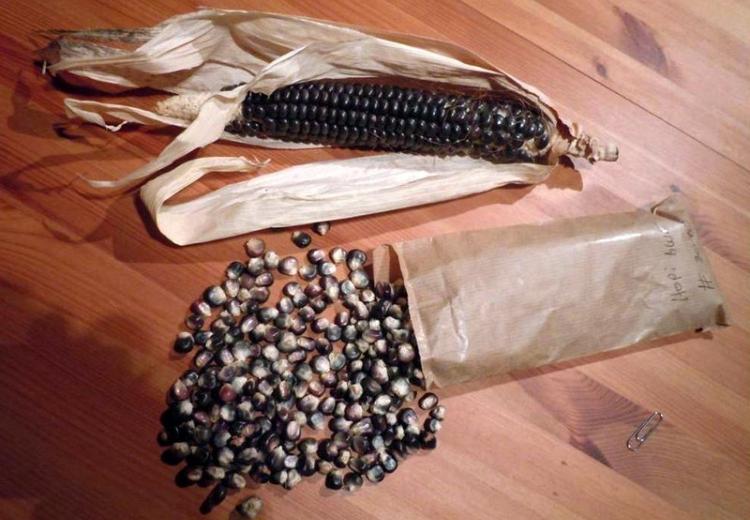Lesson 2. Hopi Poetry

Hopi Blue Corn
Hopi culture is deeply rooted in the arid landscapes of northern Arizona and the practice of dry-land corn farming. Hopi corn farmers depend upon natural precipitation and experienced, gentle, hands to grow corn. “Corn is life” and “corn are our children” are common metaphors used to explain the culture’s historic, physical, and spiritual commitment to farming corn in such a challenging environment. Hopi poetry reflects the reverence felt for corn and the harsh but beautiful environment in which it is grown.
In this lesson, students carefully examine literal and figurative language used in Hopi poetry to underscore the importance of place and corn to the Hopi culture. Examples are drawn from Hopi poet, Ramson Lomatewama, whose poetry celebrates his presence on the landscape, highlighting the things he sees, hears, feels, and experiences while working, walking, or simply standing still outside. These Hopi poems describe an intimate and personal interaction between the poet and the environment.
Lesson 2 is part of a three lesson unit on Hopi Language of Place and it may be taught in sequence or on its own. Teachers may link to the full unit with Guiding Questions, Background and Summative Assessment. Lesson 2 aligns with CCSS.ELA-Literacy.L.4.5 and CCSS.ELA-Literacy.L.4.5.a.
Guiding Questions
How do the foods we eat and the land we live on affect our arts and culture?
How can we use figurative language to express emotions and beliefs?
Learning Objectives
To make the connection between love of place and a poet’s expression of that feeling through poetry
To demonstrate understanding of literal and figurative language in samples of Hopi poetry about place and corn
